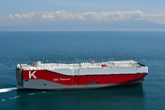Australia: an LNG powerhouse
Published by Callum O'Reilly,
Senior Editor
LNG Industry,
Many countries strive to be an energy superpower. From a single project in 1989, Australia has achieved this status and is now set to become the world’s largest exporter of LNG, with 10 projects and close to 100 million tpy of LNG production coming online at a value of AUS$70 billion. With a diverse range of project configurations and future possibilities, the country’s LNG transformation has been extraordinary.
Diverse and innovative
Broadly, Australia taps into two different gas resources using four different LNG project configurations. In Western Australia (WA) and the Northern Territory (NT), gas is extracted principally from offshore fields, and transported to shore where it is treated and liquefied (North West Shelf Gas – BHP Billiton, BP, Chevron, Japan Australia LNG, Shell, Woodside; Darwin LNG – ConocoPhillips; Pluto LNG – Woodside; Gorgon – Chevron; and Wheatstone – Chevron).
In Queensland, three coal bed methane (CBM) projects (Queensland Curtis LNG – QGC/BG Group; Gladstone LNG – Santos; and Australia Pacific LNG – Origin, ConocoPhilips, Sinopec) extract dry methane from shallow coal measures, and transport the gas to the coast for treatment and liquefaction. These projects are great examples of Australian innovation, as the gas value chains have limited storage and are the first of their kind.
In addition, the industry is pioneering two hybrid models. The Ichthys (Inpex) project will also tap into offshore gas fields, but will separate liquids at a floating production vessel, with the residual methane treated and liquefied in Darwin. The Prelude project (Shell) is another example of innovation, as it is the world’s first purely floating LNG (FLNG) facility that will treat gas and manufacture LNG entirely at sea.
Commercially, Australia’s LNG projects have strong underpinnings. All have largely sold gas forward on long offtake agreements to large credit worthy customers on terms based on oil indexed pricing. Those same customers are frequently investors in the projects to help align interests.
The country’s growth as an LNG exporting nation was based on expected rising demand for gas in Asia – a physically close market with which Australia shares close exporting ties (based on its coal and iron ore industries) – and, at the time, falling gas supplies in the US. The sector received a significant boost in the aftermath of the global financial crisis, which had the effect of constricting capital availability for rival nations, leaving only the Australian projects to capture growth markets.
The demand outlook for gas remains promising, with growth rates expected to be above global GDP growth rates. However, Australia no longer has the market to itself, with US supplies, unlocked by technology innovations, such as horizontal drilling and multi-stage fracture stimulation, to be more than abundant via five large projects under construction, and new trade agreements that allow US gas to be freely exported to some of the world’s largest gas consumers, such as Japan.
Critical challenges
It goes without saying that, in an eternally challenging sector, Australia’s LNG industry has encountered a number of challenges, including some of the highest costs in the world, low productivity and significant social license concerns.
Studies show that Australia leads the world in capital costs, driven by a small available working population, remote project sites far from settlements, long transportation supply routes, and a demanding regulatory burden. Hand-in-hand with high costs is the low productivity of the workforce, which is tied to strong organised labour, restrictive work practices and high levels of compliance-related activity.
It is also proving difficult for the industry to earn and maintain a high social license to operate. The political environment translates to an unstable regulatory environment, with frequent rule changes for gas projects. High levels of social activism also block project approvals, drilling activity and other legitimate gas industry business. The export oriented LNG trade has exposed the domestic market to the global price of gas, leading to frequent calls for gas reservation as a protective measure for domestic manufacturers ill-prepared for shifting energy costs.
As the projects transition to operations, operators are taking a firm hand to their cost structures and are working hard to improve their economics by rightsizing staffing, reshaping contracts, and collaborating to share costs. Suppliers are also acutely aware of the need to rethink their own cost structures (under no small pressure from the operators), and costs are at last coming down in the sector.
Coincident with the drop in oil prices, which has caused a fall in eventual LNG revenues, the Australian dollar has also fallen relative to the US dollar. This has helped lower the cost of inputs, such as labour and logistics, and has helped offset these challenges.
Structural shifts
A small set of structural shifts underway in global gas markets may have some eventual commercial impacts on the Australian LNG players…
This article was originally published in the March 2016 issue of LNG Industry. To read the full version of this article, sign in or register for a free trial subscription.
Written by Geoffrey Cann, Deloitte, Australia. Edited by Callum O'Reilly
Read the article online at: https://www.lngindustry.com/special-reports/08032016/australia-an-lng-powerhouse-2092/
You might also like
‘K’ Line receives LNG-fuelled car carrier
An LNG-fuelled car carrier with a capacity of 6900 vehicles has been delivered to Kawasaki Kisen Kaisha, Ltd.

